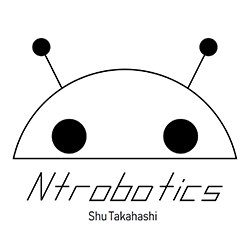Project Information
Project launch date: August 2020 [Ongoing]
Latest Revision: Magpie MIDI V2.0 (hardware improvements)
Notable awards: Honorable Mention and Finalist for the Hackaday Prize 2020
Related links: Hackaday Project Page, GitHub Repository, Nov-2020 Blog Post
Collaborator(s): Pato Montalvo (Team member for the Hackaday Prize 2020)
Description
Adaptive creative expression tool for individuals with cerebral palsy and other disabilities. The device is meant to be easily customizable to meet different needs of varying degrees of disabilities, every aspect of hardware and software is open-source. It offers new means for cerebral palsy patients and alike to express their creativity in areas of computer games, music, and writing.
Details
Magpie MIDI is an adaptive computer accessory for people with cerebral palsy and other muscle control disabilities. These kinds of disorders often have symptoms like impaired movements and involuntary movements. Such symptoms make many of the everyday tasks most of us take for granted difficult and challenging. We believe that if there is one ability that could make these people happier, it’s creative expression. Being able to creatively express ourselves gives us the independence and the freedom we enjoy.
More specifically, we believe that the most accessible way for any of us to express ourselves freely is by using computers and specialized softwares like Photoshop and Logic. However, although adaptive computer accessories do exist, many are expensive, inflexible and are limited in what it can do. Our project aims to resolve all of these issues. It integrates four common computer accessories into one simple easy to use tool: USB keyboard, USB Mouse, Gaming controller, and a MIDI controller.
Be it music, digital arts, writing gaming or whatever else, having all four capabilities in one adaptive device expands the number of tasks individuals with cerebral palsy or other disabilities are able to do on their own.
Core Functions
Users interact with the tool by blowing or drawing their breath into the device’s air holes. Each of the air holes can be customized to execute the desired actions depending on the selected functionality.
- MIDI Mode: The Magpie MIDI imitates the functionality of a regular harmonica. At the moment, our device is able to play single notes from C3 to A4. However, by using all the pressure sensors available, upto 26 notes can be played at the same time. We’ve also added a MIDI potentiometer so that it can be used to control sound design parameters such as volume, gain, kill, pan and reverb.
- Mouse Mode: To use the mouse, the user can simply move their head to move the cursor similar to using a joystick. Blowing into the device will left-click and drawing from the device will right-click.
- Keyboard Mode: With the 13 air holes on the harmonica, the user can type out the full 26 alphabet letters without the need for additional buttons or controllers. For example, blowing into the first air hole for example will type out the letter ‘a’, and drawing from the first air hole will type out the letter ‘b’.
- Gamepad Mode: This feature is still in progress, but we are working to make the device able to do everything that a typical console gaming controller is able to do.
Additional Details
- Switching Between Modes: Users will be able to switch between different modes by what we will be calling ‘gestures’. Our idea currently is to make it so that when the user blows air from left to right of the harmonica unit, Magpie MIDI will switch its function. We plan on adding more ‘gestures’ for other miscellaneous tasks as well such as for typing special characters.
- Software: We plan on creating a dedicated software for customizing what each of the airways in the device does. Many softwares require shortcuts such as pressing CTRL and W at the same time. Using the software, the users will be able to program this without writing a single line of code.
- Haptic Feedback: We will be adding haptic feedback to our device. With haptic feedback driven by vibration motors similar to ones found inside phones, the users will find it easier to interact with our device.
- Multiple Magpie MIDI: We want to support multiple Magpie MIDI to be used simultaneously. For example, many MIDI musicians like to have a MIDI keyboard and MIDI drum pad or MIDI knob placed next to each other.





